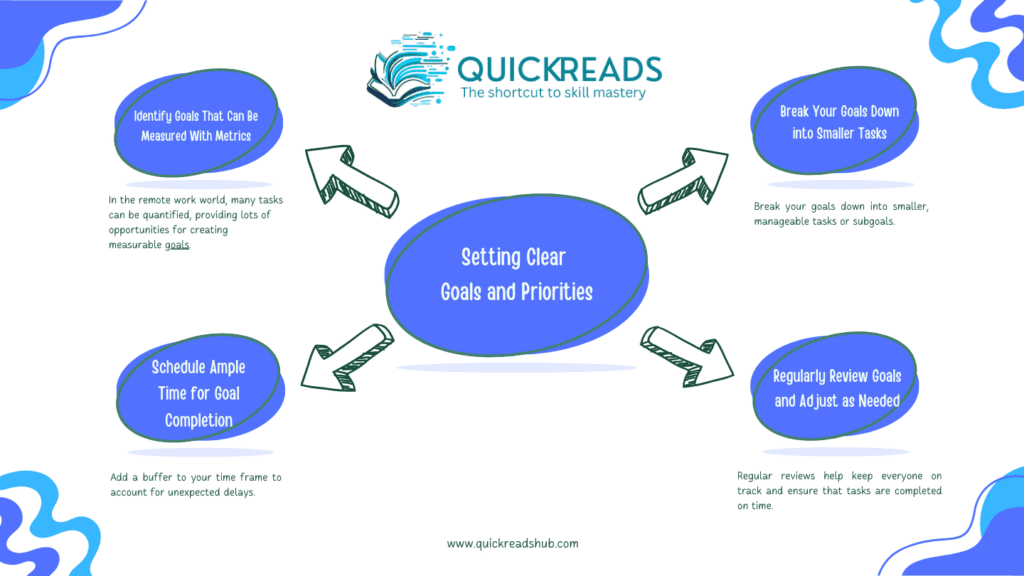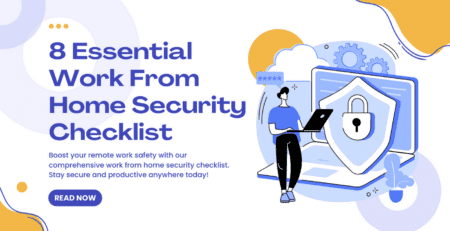Master remote work with how to manage time as a remote worker. Tips designed for digital nomads. Start mastering time now!
Introduction
Hello, remote workers! Ever had one of those days where you blink and it’s already 4 pm? How did that happen? If this sounds familiar, then you’re in the right place.
Before you dive deeper, have you checked out our ‘New Six-figure Remote Work Tips: The Ultimate Treasure Guide’ yet? If not, make sure to give it a read first for a comprehensive understanding of remote work success!
Managing time as a remote worker can feel like catching a greased pig. Just when you think you’ve got a grip, it slips away. But don’t worry, it’s not an impossible task, and we’re here to help you tame that time pig.
Why is time management important for remote workers? Imagine juggling work, home chores, and maybe even a kid or two. Without effective time management, it’s a recipe for chaos. By learning how to manage time as a remote worker, you can avoid turning into a work-from-home zombie.
You’re probably asking, “Is this blog worth my time?” Well, time is gold, and we’re here to help you save it. This blog isn’t just a collection of tips; it’s a guide, filled with real-world examples and relatable stories, to help you master the art of time management.
So, ready to say goodbye to chaotic days and hello to productivity? Let’s dive into the world of time management for remote workers.
Set Clear Goals and Priorities
Learning how to manage time as a remote worker can feel like trying to juggle while riding a unicycle. Don’t worry; I’ve been there! The key is to start by setting clear goals and priorities. You’ll be amazed at how much easier it becomes to manage your time effectively when you have a clear vision of what you’re working towards.

So, you might be wondering, “How do I set effective goals and priorities?” Great question! Let me break it down for you.
A. Identify Goals That Can Be Measured With Metrics
Firstly, it’s crucial to establish goals that can be measured. In the remote work world, many tasks can be quantified, providing lots of opportunities for creating measurable goals. It could be publishing a certain number of articles, reviewing specific data points, or reaching a set number of customer interactions. By tying your goals to quantitative objectives, you can create a clear path to success.
B. Break Your Goals Down into Smaller Tasks
Ever looked at a large project and felt overwhelmed? I know I have. Here’s a tip: break your goals down into smaller, manageable tasks or subgoals. This way, you can track your progress and see if you’re on the right path toward achieving your final goal. Think of it like eating a sandwich. You wouldn’t try to fit the whole thing in your mouth at once, right? The same principle applies here. Take it one bite, or task, at a time.
C. Schedule Ample Time for Goal Completion
Remember when we believed we could finish that project in one day, only to realize it took a week? It’s a common pitfall known as the planning fallacy. Most of us tend to be overly optimistic when estimating the time needed to complete a task. To avoid this, add a buffer to your time frame to account for unexpected delays. Trust me, your future self will thank you for this extra wiggle room.
D. Regularly Review Goals and Adjust as Needed
Setting goals is an excellent start, but it’s just as important to regularly review your progress. Think of it like going on a road trip; you wouldn’t just set off without ever checking your GPS, would you? Regular reviews help keep everyone on track and ensure that tasks are completed on time. This way, you’ll always know if you’re heading in the right direction or if a detour is needed.
Remember, figuring out how to manage time as a remote worker is a journey, not a destination. So, buckle up, and let’s take this trip together. You’ve got this!
Create a Schedule and Stick to It

Creating a schedule and sticking to it is an excellent way of learning how to manage time as a remote worker. Let’s be honest, without a boss looming over your shoulder or colleagues around to witness your diligent work ethic, it’s easy to get lost in the comfort of your home and lose track of time. However, a well-structured schedule can be a game-changer for your productivity. Plus, it makes sure your work-life balance doesn’t take a nosedive into the realm of late-night emails and early-morning Zoom calls.
So, how do you go about creating an effective schedule and sticking to it? Well, buckle up, because we’re about to embark on a journey into the world of time management, with you as the pilot and me as your trusty co-pilot (no, I don’t have a pilot’s license, but I’ve watched a lot of movies).
- Block your non-working hours: You may feel like you’re always “on,” but even the hardest working remote marketers need to set boundaries early on. Treat your work hours as sacred, and don’t let them bleed into your personal life. Use Google Calendar’s Working Hours setting or similar features on other calendar apps to visibly mark the times you’re off the clock. You’re a remote worker, not a robot. So, let’s keep it that way, shall we?
- Schedule time for regular duties: Every job has certain tasks that recur weekly. Instead of letting these duties overshadow your more significant projects, schedule specific times to complete them each day. It’s kind of like taking out the trash at home – you don’t want it piling up and creating a mess, do you?
- Create blocks for larger projects: We’ve all been there – you’re in the zone, making progress on a big project, and then BOOM! An unexpected meeting pops up and throws you off your game. To avoid these productivity potholes, create time blocks for larger projects that need your undivided attention. This is your “Please Do Not Disturb” sign, so use it wisely.
- Schedule regular check-ins with colleagues: Remote work can sometimes feel isolating, but regular one-on-one check-ins or virtual coffee chats can help keep you connected. It’s like being part of a virtual water cooler conversation – you might not always cross paths with these colleagues in meetings, but these check-ins keep you in the loop.
- Include your morning routine: Yes, you read it right. Your morning routine is an essential part of your schedule. Whether it’s a morning run, a hearty breakfast, or simply enjoying a cup of coffee, these activities set the tone for your day. So, make sure they have their rightful place in your schedule.
Remember, the goal here is not to micromanage every second of your day but to create a structure that promotes productivity while keeping stress at bay. In the end, knowing how to manage time as a remote worker is a lot like juggling. It takes practice and patience, but once you get the hang of it, you’ll wonder how you ever managed without it. And hey, if you do drop a ball here and there, don’t sweat it – even the best jugglers have off days.
Now, tell me, what’s one scheduling technique that’s worked wonders for you as a remote worker?
Minimize Distractions
As a remote worker, you’re likely familiar with the siren song of distractions. From the latest episode of your favorite show on Netflix to the pile of laundry that’s been sitting there for a bit too long, it can be challenging to keep your attention glued to your work. And let’s not even start on the rabbit hole that is social media. But hey, we get it. We’re not here to judge but rather to offer some tips on how to manage time as a remote worker by minimizing these distractions.
So, how can you stop these distractions from turning your workday into a chaotic mess?
- Create a dedicated workspace: Just as superheroes have their Batcaves and Supermans their Fortresses of Solitude, you need your own space for work. This could be an entire home office or just a corner of your living room, but it should be a place that signals your brain, “Hey, it’s time to work now!”
- Set boundaries with people around you: Remember when you were a kid and you had that “Do Not Disturb” sign on your bedroom door? Well, it’s time to bring that back. Make sure your family, roommates, or whoever else might be around know when you’re in work mode and that it’s not the best time to start a discussion about last night’s dramatic reality TV show ending.
- Use tools to block out distractions: Internet scoping is kind of like being a detective, and you need the right tools for the job. Apps like Freedom or Cold Turkey can block distracting websites for a set period of time. It’s like your own personal internet bouncer, keeping those time-wasting websites out of your club.
- Take regular breaks: It might sound counterintuitive, but taking regular breaks can actually help you stay focused. It’s kind of like giving your brain a mini-vacation every now and then, so it doesn’t get too tired and start thinking about how much more fun it would be to scroll through Instagram instead of working.
- Get physical: No, we don’t mean to start doing push-ups in your living room (although that could be a fun break activity!). What we mean is, get up and move around a bit. A short walk, some light stretching, or a quick dance to your favorite tune can reenergize your brain and help you regain focus.
Remember, you’re not alone in this. We all face distractions, and we all have our own ways of dealing with them. The key is to find what works best for you and stick with it. After all, managing distractions is a crucial part of learning how to manage time as a remote worker. You’ve got this!

Take Breaks and Practice Self-Care
The Importance of Taking Breaks
Ever felt like you’re running a marathon without a finish line? That’s the work-from-home life sometimes. But guess what? Even marathon runners take water breaks. And you should too.
Research shows that taking regular breaks can help reduce stress and prevent burnout 1. It’s like giving your brain a mini-vacation. You wouldn’t deny your brain a vacation, would you?
And it’s not just about your mental health. Sitting for long periods can lead to health problems like obesity, heart disease, and even diabetes. Mayo Clinic recommends getting up and moving every 30 minutes 2. So, stand up, do a little dance, and make a little love to live. Your body will thank you.
Breaks: The Secret Sauce to Productivity
Now, you might be thinking, “But I have so much work to do!” Well, here’s a fun fact: breaks can actually increase productivity. A study found that the most productive workers take a 17-minute break for every 52 minutes of work 3. It’s like the Pomodoro Technique but with more salsa.
And here’s another surprise: breaks can also stimulate creativity. A study found that employees who take regular breaks come up with more innovative ideas 4. So, next time you’re stuck on a problem, take a break. You might just come back with the next big idea.
Tips for Incorporating Breaks and Self-Care into Your Workday
So, how can you incorporate breaks and self-care into your workday? Here are a few tips:
- Set a Timer: Use a timer to remind you to take breaks. There are plenty of apps that can help with this.
- Move Your Body: Use your breaks to get some physical activity. Stretch, take a walk, or do a quick workout.
- Mindful Moments: Practice mindfulness or meditation during your breaks. It can help reduce stress and improve focus.
- Nourish Yourself: Use your breaks to hydrate and eat healthy snacks. Your brain needs fuel to function at its best.
- Do Something You Love: Read a book, listen to music, or do a hobby. Doing something enjoyable can help recharge your batteries.
Remember, taking care of yourself isn’t a luxury, it’s a necessity. So, go ahead, take that break. You’ve earned it!
Use Time Management Tools and Techniques
Time Blocking
First up, we have time blocking. Imagine it as a Tetris game for your schedule. You’re fitting blocks of tasks into your day, making sure everything has its place. It’s a simple technique, but oh boy, does it work wonders!
For example, you might block out 9-11 AM for focused work, 11-12 PM for emails, and so on. The key is to stick to your blocks like a superhero sticks to their mission.
- The Pomodoro Technique
Next, we have the Pomodoro Technique. No, it’s not a new pasta recipe, but it’s just as delightful. This technique involves breaking your work into 25-minute chunks (or “Pomodoros”), separated by five-minute breaks. After four Pomodoros, you take a longer break. It’s kind of like high-intensity interval training but for your brain. - Trello
Now, let’s talk about Trello. It’s a project management tool that’s as versatile as a Swiss Army knife. You can create boards for different projects, add tasks as cards, and move them around as you progress. It’s like having a personal assistant who’s always ready to remind you what’s next on your to-do list. - Asana
Asana, another project management tool, is like Trello’s cousin. It’s great for team collaboration, allowing you to assign tasks, set deadlines, and track progress. It’s like having a bird’s eye view of your entire project landscape. - RescueTime
Last but not least, we have RescueTime. This tool tracks how you spend your time on your devices. It’s kind of like a fitness tracker, but instead of steps, it counts minutes spent on different activities. It’s a great way to see where your time is going and make adjustments as needed.
Remember, these tools and techniques are just tools and techniques. They’re not magic wands. But with a little practice and persistence, they can help you become a time management superhero. So, which one will you try first?
Conclusion
In this blog post, we’ve discussed several strategies to enhance time management in a remote work setting. Let’s recap the key points:
- Setting Measurable Goals: Establishing clear, quantifiable goals helps remote teams align their work and track progress effectively. Breaking down larger objectives into smaller tasks or KPIs makes progress easier to monitor and manage.
- Creating a Structured Schedule: Implementing a structured work schedule promotes efficiency and prevents overwork. This includes blocking non-working hours, scheduling regular duties, creating time blocks for larger projects, and regular check-ins with colleagues2.
- Taking Regular Breaks and Practicing Self-Care: Self-care is crucial in remote work to prevent burnout. This involves taking frequent breaks, stepping away from the workstation, and engaging in activities that promote physical and mental well-being3.
- Making Use of Technology: Utilizing various digital tools can greatly improve communication, collaboration, and productivity in remote work.
- Evaluating and Adapting: Regularly reviewing goals, progress, and methods of working allows you to identify any issues and make necessary adjustments in a timely manner.
Time management is a skill that can be honed and improved over time. It requires a balance of structure, flexibility, and mindfulness to ensure a productive and healthy remote work life.
We encourage you to implement these strategies in your remote work routine. Experiment with them, see what works best for you, and don’t be afraid to adapt and modify as needed. Remember, the goal is to enhance your productivity without compromising your well-being. You’ve got this!
Thank you for reading, and we wish you success in your remote work journey!





